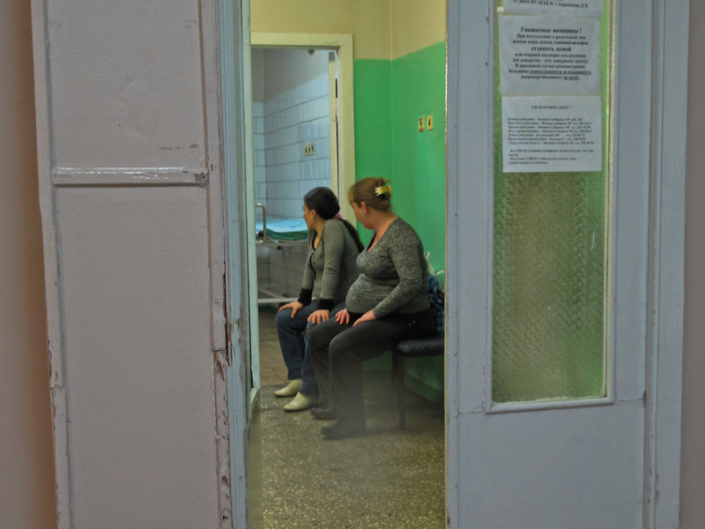The Russian Federation is the biggest country in the world, covering more than 6.6 million square miles. It is also the ninth most populated country with almost 146 million citizens. Despite Russia having universal healthcare, most people are unable to obtain an adequate form of it.
After the fall of the Soviet Union in 1991, healthcare conditions have not improved and many expect it will worsen due to government corruption, consequences of COVID-19 and a lack of government funding for medical supplies. Here are 10 facts about healthcare in the Russian Federation.
- Life expectancy increased by eight years over the past 20 years but still remains lower in males than in females. In 2000, estimates determined that the average lifespan of both genders was 65 years old, but in 2018, the number increased to 73 years old. In 2020, estimates identified that females live to 77.8 years old, while males only live to an average of 66.3 years.
- The Russian Federation provides its citizens with compulsory insurance, known as OMC, or free universal healthcare. Russia also allows its citizens to purchase privately-owned insurance or DMC. People who are on the OMC do not receive coverage for the majority of vital treatments and everyone has to pay in full for the provided medical services. Poor healthcare in the Russian Federation stems from a lack of governmental funding, hence more than 17,500 Russian villages and towns have no medical infrastructure and salaries for doctors and nurses are often as low as $250 a month.
- In 2019, a large number of imported medicines disappeared from Russian pharmacies and the sanctions against Russia further escalated the drug shortage problem. The Russian government failed to supply basic drugs like glucose, Prednisone and Lamivudine to its hospitals. There is also a painkiller deficit for terminally ill patients which is linked to the suicides of 40 terminally ill cancer patients in Russia in 2014. The problem with drug shortages and low wages has escalated in the previous years because Russia has implemented policies that not only cut spending on imported Western products but also only promote domestic businesses.
- The Russian government plans to cut its healthcare budget by 33% in the near future, bringing it down to $5.8 billion a year. Russia’s current health expenditure from GDP is only 5.3%, which is less than Guatemala and Madagascar’s annual GDP healthcare spending. The current global average health expenditure is at 10%. According to a 2014 Bloomberg report, healthcare in the Russian Federation placed last out of 55 developed nations.
- Moscow, the capital of the Russian Federation, has the best hospitals in the country, some of which have national rankings. Moscow’s Children Hospital ranks 250th in the world, while the Bakulev Center for Cardiovascular Surgery ranks 291st. Despite dire shortages of medicine, both hospitals operate at a national level. Russia also has more than 17,000 pharmacies and 17% of them are privately owned, while the rest either belong to the city’s authorities or regional governments.
- In Russia, 98% of children between the ages of 12-23 months receive vaccinations for measles and skilled health staff attend 99% of all births. However, the general rate of vaccinated children has recently declined because not only did the parents receive the option to not vaccinate their children, but many citizens noticed that their children get ill more frequently after receiving the vaccines. Because the measles vaccine became widespread since 1993, cases in Russia have drastically decreased, dropping from almost 80,000 to only 2,539 in 2018. In addition, there were 51 births per 1,000 women between the ages of 15-19 in 1990, but in 2018, it has decreased to 20 births per 1,000 women. Russia’s teenage pregnancy rate is decreasing because of an increase in contraceptive counseling and laws, one of which stipulates young women older than 15 years old to receive sexual health consultations without their parents’ permission.
- Only 5% of people hold private medical insurance or use private healthcare in the Russian Federation because many are unable to afford it. The cost of private health insurance in Russia can vary from 10,000 to 45,000 rubles per year, and on average, a living wage family has an income of 23,700 rubles per month. There were no governmental attempts to make insurance more affordable and the Russian Federation will cut its health expenditure next year by 33%. In addition, many Russian citizens have to seek appropriate healthcare in neighboring countries.
- There are only 8.4 psychiatrists, 2.4 social workers and 4.6 psychologists per 100,000 people. Despite the Russian law guaranteeing psychiatric care to its citizens as a civil right, Russia underfunds medical programs due to its corruption. The Corruption Perceptions Index ranks Russia 137th out of 180 countries worldwide, and the Global Corruption Barometer also estimates that 27% of public service users paid a bribe in 2016. In 2018, the Russian government added new amendments to its Administrative Code, which allows courts to freeze one’s assets if they are under investigation for bribery. It also exempts businesses from liability if they are willing to cooperate with the authorities to uncover other criminal schemes. Both actions are promising in terms of battling corruption. Unlike the seeming battle with corruption, Russian psychiatric hospitals have been struggling immensely from governmental underfunding. Psychologists and social workers are unavailable in 13 territories within Russia, and findings determined that one-third of Russian in-patient psychiatric hospitals have unsanitary conditions. It has been numerously reported that Russian psychiatric hospitals have 15 people in one room, which has bars on all windows and no partitions or toilet access.
- In 2017, the seven leading causes of death were ischemic heart disease, stroke, Alzheimer’s disease, cardiomyopathy, Cirrhosis and lung cancer. Many of them decreased in frequency since 2007. Only Alzheimer’s has increased by 34% between 2007-2017, while strokes have decreased by 19.2% and cardiomyopathy by 29.5%, despite the lack of improvements in Russia’s medical system.
- Small Russian nonprofit organizations and civil societies like Patient Control, Eurasian Women’s Network on AIDS and the EVA Association have been fighting an uphill battle with the Russian government. The EVA Association is a nonprofit organization that helps women with HIV or any other immunodeficiency disorder, by bringing together a network of activists, 72 medical specialists and eight other nonprofits from more than 39 cities in Russia. Patient Control, on the other hand, advocates for citizens who have not received the necessary medication for tuberculosis, Hepatitis C and HIV due to significant healthcare budget cuts in Russia. In 2016, the Russian Red Cross branch also worked closely with the Regional Health Initiative, a Red Cross program, and it worked to supply civilians, particularly in Sochi, Irkutsk, Belorechensk and Tula, with food parcels and tuberculosis screenings.
While some are addressing the problems regarding healthcare in Russia, it is impossible to eradicate poor healthcare all at once because of corruption and lack of funds. As of June 2020, the quality of healthcare in the Russian Federation remains low. With anticipated health expenditure budget cuts and consequences of COVID-19, experts do not expect the situation to improve in the near future. However, because the nation’s citizens are staying united and helping one another through various associations and nonprofits, there is hope at the end of a very long tunnel.
Source: Borgenproject















